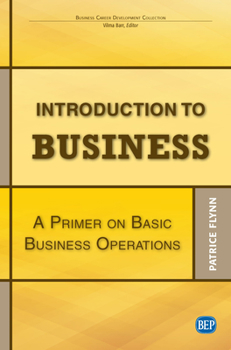Introduction to Business: A Primer On Basic Business Operations
Do we need yet another textbook on business fundamentals when every publishing house has stacks of such books ready for sale? No, we do not need another standard textbook. What we need is a new kind of teaching tool that at once accommodates the modern-day classroom and exposes new century students to the contemporary world of global capitalism in which today's businesses operate.
In primer form, Dr. Patrice Flynn clarifies the functional areas of business, a term used to describe what every businessperson needs to understand to be successful, from entrepreneurship to small business development, legal structure, going global, finance, big data, marketing, management, and more.
This primer demonstrates how a master teacher teaches new century students, thus giving supremacy to pedagogy along with rigorous content. The primer can be used with both business students and the growing number of nonbusiness students interested in learning how business works before entering the world of work. Every student will come away not only with a sense of the business areas that pique their interest but also with a deeper understanding of business from which to craft next career steps.
Based on Your Recent Browsing
Related Subjects
Reference




















